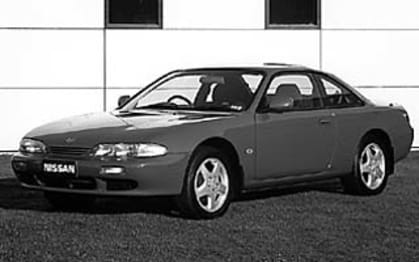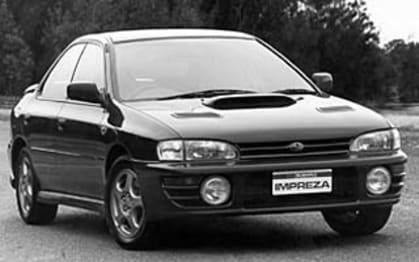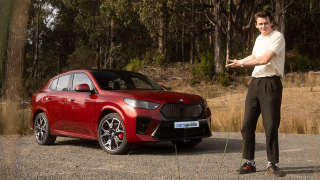
Used Nissan Skyline review: 1989-2000
- Nissan Skyline
- Nissan Skyline 1990
- Nissan Skyline 1989
- Nissan Skyline 1991
- Nissan Skyline Reviews
- Nissan Reviews
- Nissan Coupe Range
- Nissan Sedan Range
- Coupe
- Sedan
- Nissan
- Used Car Reviews
- Buying tips
Fans of V8 Supercar racing should be forever grateful to Nissan. Had it not been for Nissan’s awesome Skyline GT-R V8 Supercar racing may not exist. So dominant was the turbocharged four-wheel drive coupe on our race tracks that it forced racing officialdom to change the rules in favour of home-grown V8s to avert the threat that touring car racing could implode.
The GT-R was the last, and greatest car built to the old international Group A touring car rules, the rules adopted by Australia for its premier racing series between 1985 and 1992.
Group A was brought in to give imported cars a chance to compete in a championship traditionally ruled by Holden and Ford and their V8s. For the first couple of years the formula worked quite well until, first Ford built its turbocharged Sierra, and then Nissan trumped everyone with the GT-R.
Aussie race fans, starved of local success, stayed away from race tracks in the knowledge that their favourites had no hope of competing against the mighty Nissans. Even a range of penalties designed to slow the GT-Rs failed to halt their rampaging run through the local championship.
It finally took a wholesale change of rules to the now familiar and highly popular V8 Supercars to put an end to the rein of the GT-R.
The GT-R remains an awesome supercar and a favourite of local petrol heads who have imported 100s of them under the Specialists and Enthusiasts Vehicles Scheme (SEVS) which allows for the importation of special interest cars like the GT-R that aren’t available for sale here through the big car companies.
MODEL WATCH
Before they could go racing Nissan had to import 100 Skyline GT-Rs and sell them on the local market. That requirement was satisfied in 1991 with the one and only batch imported by Nissan, all cars subsequently landed were so-called ‘grey imports’ brought in under the SEVS rules.
That first model brought in by Nissan to dominate local racing was the R32, a rather dumpy plain looking two-door coupe. Without the war paint of the factory race cars the R32 didn’t ooze aggression, until of course the right foot was buried in the carpet.
Then it would explode into action. A stock standard R32 would thunder to 100 km/h in less than five seconds and dismiss the standing quarter-mile sprint in around 13 seconds.
It was fast thanks to its twin turbocharged 2.6-litre straight six cylinder engine that boasted peak power of 205 kW.
All R32s had a five-speed manual gearbox which was packed full of tall gearing that gave it good top end performance, but could make it quite hard to get off the line smoothly and quickly.
While that made it fast in a straight line it was its sophisticated four-wheel drive system that allowed it to corner as if on rails. The system was designed to send the drive to the rear wheels until the front wheels needed to be brought in to play which was when the computer sent the necessary amount of grunt forward.
Four-wheel discs with ABS provided powerful and safe stopping power while subtle four-wheel steering added to its cornering prowess.
The R32 is the lightest GT-R built, they gained weight with each new model after that and for some became less appealing as a result.
Nissan chose not to import the R33 leaving the way open for importers to fill the niche.
The R33 was more aggressive visually with more body add-ons in the form of a rear wing and side skirts. It was also bigger and a little plumper, but the engine had more torque, which made up for the extra weight.
It was also marginally slower than its predecessor, but was still able to cut a sub-5.0 second time for the 0-100 km/h sprint, as well as a low-13s quarter-mile time.
The five-speed manual gearbox was improved with new synchros, which made shifting nicer.
Inside there was more room, particularly for rear seat passengers who would be quite cramped in the R32 and the later R34.
With the best ride and roomiest interior the R33 is widely regarded as the most practical GT-R for use as a daily driver, but it lacks the excitement of the R32 or R34 models.
The R34 followed in 1999 and until Nissan launches a new generation GT-R remains the ultimate evolution of the performance coupe.
Although it’s not immediately obvious the more aggressive looking R34 is smaller, being 75 mm shorter, and yet it is also some 10-20 kg heavier.
The awesome twin turbo six was reworked with new camshafts and new turbos with power pegged at 206 kW at 6800 revs and torque at 392 Nm at 4400 revs.
A Getrag six-speed gearbox replaced the old five-speed, although performance is similar to the older models.
IN THE SHOP
The GT-R is a very fast car, but it’s also heavy, a combo that will take its toll on all areas of the car over time.
Brakes and tyres are the obvious things that take a pounding on the GT-R if driven hard, and you have to assume that GT-R’s are driven that way. Check for disc wear and cracking, these can be quite expensive to replace, pads and tyres will wear out quickly if punished.
The engine is generally rugged, but needs to be well serviced. Cam belts need to be changed at 80,000 km and must be changed so be sure to look for evidence of that.
It’s also worth doing a compression test on the engine, and listening for odd noises that might point to internal wear. Main bearings can be a problem in engines that are abused.
A problem gearbox can be hard to pick until it’s to the point that shifting becomes difficult or there are obvious noises coming from it. A replacement clutch is expensive if needed.
Look for signs of crash repairs, inconsistent paint quality and variable panel gaps that might suggest panel replacement. Check underneath for rust and damage, and look closely for extra holes that might give away a competition past.
Paint on early cars is likely to be fading as the clear top coat wears thin, particularly on the upper surfaces most exposed to the sun.
Early R32 models are known to suffer from leaks around the windscreen and rear window. The screen can be expensive to replace because the radio antenna is built into it.
IN A CRASH
The GT-R’s best defence is its ability to avoid a crash through its four-wheel drive, ABS and chassis agility, but it’s a fast car and these things can’t always save a poor driver.
Airbags were fitted from the R33 model.
LOOK FOR
• R32 best performer of the lot
• uninspiring looks for such a hot car
• exhilarating turbo performance
• awesome four-wheel drive road holding
• signs of being thrashed
• bang-for-buck bargain
THE BOTTOM LINE
One of the most awesome performance cars ever built, but be careful of cars that have been thrashed.
RATING
75/100
Pricing guides
Range and Specs
| Vehicle | Specs | Price* | |
|---|---|---|---|
| Executive | 3.0L, ULP, 4 SP AUTO | $2,640 – 4,070 | 1989 Nissan Skyline 1989 Executive Pricing and Specs |
| GXE | 3.0L, ULP, 4 SP AUTO | $2,640 – 4,070 | 1989 Nissan Skyline 1989 GXE Pricing and Specs |
| GXE | 3.0L, ULP, 4 SP AUTO | $2,640 – 4,070 | 1989 Nissan Skyline 1989 GXE Pricing and Specs |
| GX | 3.0L, ULP, 5 SP MAN | $2,420 – 3,850 | 1989 Nissan Skyline 1989 GX Pricing and Specs |
Other cars to consider
$2,640
Lowest price, based on third party pricing data















